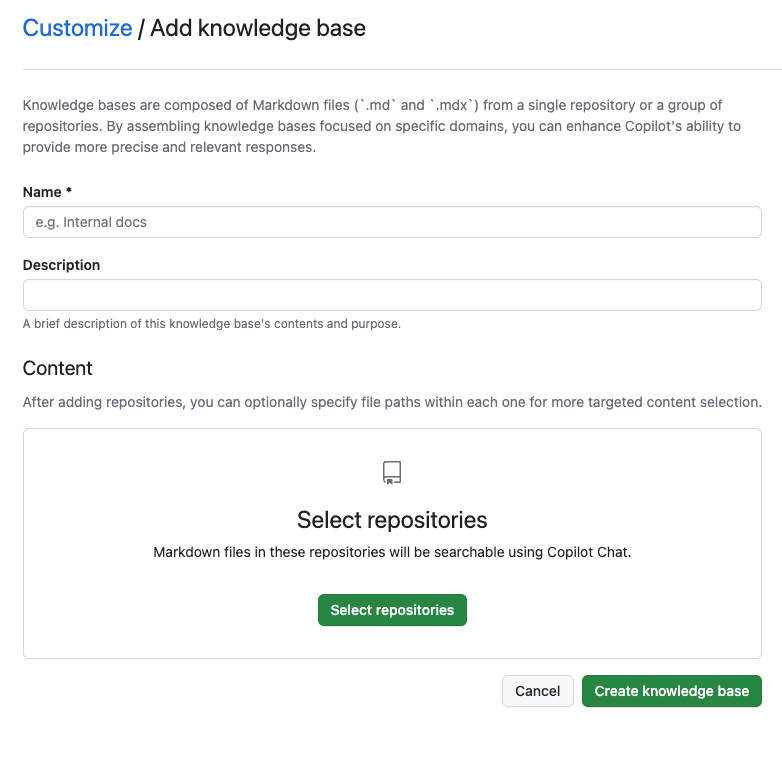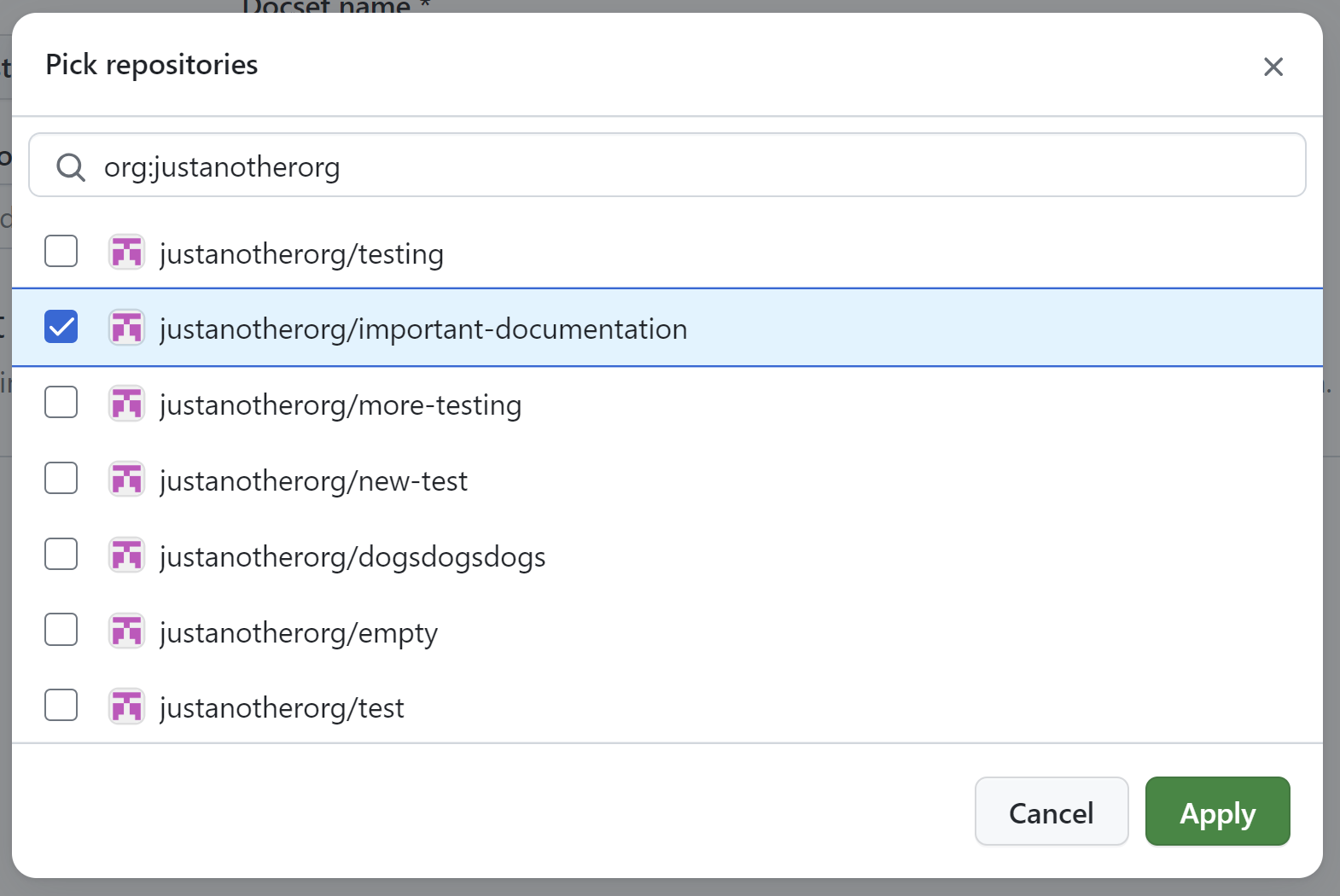About knowledge bases
Organization owners can create knowledge bases, bringing together Markdown documentation across one or more repositories. Organization members can then specify that knowledge base as the context for Copilot Chat in GitHub.com.
When you ask a question in Copilot Chat in GitHub.com, GitHub Copilot will search the knowledge base for relevant information and synthesize a response. For more information on how to use knowledge bases in Copilot Chat in GitHub.com, see "Asking a question about a knowledge base."
Creating a knowledge base
You can create a knowledge base from a single repository or a selection of repositories. You can create a knowledge base using public, private, and/or internal repositories.
Knowledge bases you create will be accessible by all organization members with a GitHub Copilot Enterprise subscription. When an organization member uses a knowledge base as context in Copilot Chat in GitHub.com, the response will only use data from repositories that the organization member has read access to.
-
No canto superior direito do GitHub.com, selecione sua foto do perfil e em Suas organizações.

-
Ao lado da organização, clique em Configurações.
-
In the left sidebar, click Copilot then click Customize.
-
To the right of "Knowledge", click Add knowledge base.
-
In the "Name" field, enter a unique name for the knowledge base. Optionally, in the "Description" field, you can add a description for the knowledge base.

-
Under "Content", to see a full list of available repositories, click Select repositories.

-
To select a repository or repositories, click the checkbox next to the repository name. When you're finished selecting repositories, click Apply.

-
Optionally, you can define which paths within the selected repositories to index.
- Click Edit file paths.

- List the paths you want to include in the knowledge base, one path per line. When you're finished, click Apply.
-
Click Create knowledge base.
Updating a knowledge base
Organization owners can delete a knowledge base created in their organization.
-
No canto superior direito do GitHub.com, selecione sua foto do perfil e em Suas organizações.

-
Ao lado da organização, clique em Configurações.
-
In the left sidebar, click Copilot then click Customize.
-
To the right of the knowledge base you want to edit, click .
-
Make your desired changes to your knowledge base.
-
Click Update knowledge base.
Deleting a knowledge base
Organization owners can delete a knowledge base created in their organization.
-
No canto superior direito do GitHub.com, selecione sua foto do perfil e em Suas organizações.

-
Ao lado da organização, clique em Configurações.
-
In the left sidebar, click Copilot then click Customize.
-
To the right of the knowledge base you want to delete, click .
-
In the "Confirm deletion" dialog box, review the information and click Delete.